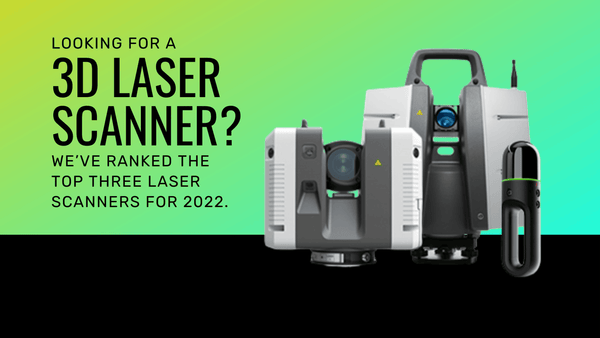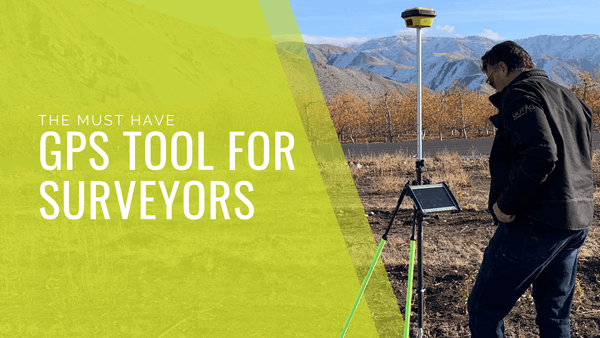Maintaining Your Total Station
We’re approaching the warmer months and so it’s necessary to take extra precautions and measurements to protect, care for and promote the longevity of your manual and robotic total stations, and equipment in general. We’ve compiled a list of easy and fuss-free measures that you and your team can take to keep your equipment safe during seasonal shifts in weather.
Before we break down the necessary steps in maintaining your total station, we’ll cover the four main components of a total station for those who may be new to the industry or looking to refresh their memories.
Total Station Components
Electronic Distance Measurement (EDM):
The function of the EDM is to measure distances from the total station to a reflector, put simply. The length of the line is measured using electromagnetic energy. Depending on the equipment you have there are different types of electromagnetic energy being employed including infrared or laser and microwave. If your equipment utilizes infrared or laser electromagnetic energy it will also come equipped with a prism.
Electronic Theodolite:
The theodolite measures horizontal and vertical angles. The combination of the optical plummet, level bubble and calibrated circles all work in tandem with one another allowing the theodolite to pinpoint the angles.
Microprocessor:
The microprocessor has allowed us to reduce the amount of math required in the field. Hallelujah! Depending on what brand of total station you’re working with the microprocessor may perform all or some of the following functions.
- Averages multiple angle measurements
- Averages multiple distance measurements
- Computes horizontal and vertical distances
- Provides corrections for temp, pressure and humidity
- Computes inverses, polars and resections
- Computes X, Y and Z coordinates
Electronic Display:
The electronic display allows those in the field to “see” what is happening within the total or robotic station. It allows the user to input instrument and reflector heights and gives us the ability to navigate to differing menus and access important data relevant to the job at hand.
The electronic display, along with the handheld device used to communicate with the instruments, should always have a screen protector to increase longevity and visibility for those that use them.
Total Station Transportation
Manual and robotic total stations are precision instruments. While in the field, moving from one location to another, your total station should be packed into a legitimate carrying case to protect it from unforeseen circumstances — think sudden changes in weather, obstacles in your pathway and debri floating in that air like dust and ash. If you find yourself contemplating walking from one area of the job site to another without properly packing up your equipment, keep in mind that 52 percent of all car accidents occur within a five mile radius of your home.
The same care on the job site should be applied at the end of each and every workday. Total stations should be packed in original carrying cases and properly secured when in a moving vehicle. When possible, it’s recommended that you place the total station in the cab of your work vehicle rather than in the bed of a truck or the back of a van.
Total Station Storage
If you wouldn’t leave a dog in the car because of temperature concerns then don’t leave your total station in the car either! These precision instruments have temperature limits and when being stored for any length of time they should be kept in a temperature controlled climate.
Whenever you aren’t using your total station the batteries should be removed and duct tape should be placed on the battery terminals as an extra precaution. Dust and moisture are a total station’s arch nemesis and so any and all precautions should be taken to prevent dust and moisture from attaching themselves to the equipment, the batteries and the interior of the case itself. It’s a good idea to keep a dry lint-free cloth handy to wipe down your equipment and the interior of the case before storing or packing up at the end of the workday.
Cleaning & Drying
We really can’t reiterate this enough — dust and moisture are the enemy of precision equipment like manual and robotic total stations. Avoid touching any glass components with anything other than a lint-free cloth. We recommend keeping a can of air handy so that if you do see any fine particles on the equipment lenses it can be removed safely and efficiently.
Keep the proper cleaning supplies for your equipment handy so you don’t find yourself tempted to use something that can cause permanent damage to your equipment.
On occasion you may find that your equipment’s prisms are fogging up. This can happen when the prisms themselves are cooler than the ambient temperature outside. One way to keep from having to wipe down the prism (which is really only a temporary fix to the fog issue) is to place them in an interior jacket pocket or in the cab of your work vehicle until they adjust.
Inspect, Calibrate & Service
Inspecting your equipment regularly for cracks and dents or after long periods of storage can keep a small issue from turning into a large, expensive fix. Regular inspections allow you to unearth problems early on and avoid further damage or expensive, avoidable repairs.
It’s always a good idea to take note of the recommended maintenance schedule of your equipment. Plugging these dates into your calendar from the beginning ensures that you won’t accidentally allow an important maintenance date to lapse unintentionally.
It’s also helpful to regularly check for any software updates or upgrades that may be available. Regularly updating your equipment’s software can prevent issues that may delay a project deadline.
Regularly calibrating your equipment can assist in avoiding costly mistakes, reduce your downtime and give you and your team peace of mind. Your equipment representative is a good person to check in with if you want to calibrate your equipment properly and on schedule.
Insure Your Equipment
This may seem like a no-brainer, but it’s often a component of total station maintenance that can go overlooked after the initial purchase. We recommend that you have your manual and/or robotic total station insured for theft, damage, vehicular damage and natural disasters. Never, ever leave your equipment alone on the job site or unattended in a vehicle.




